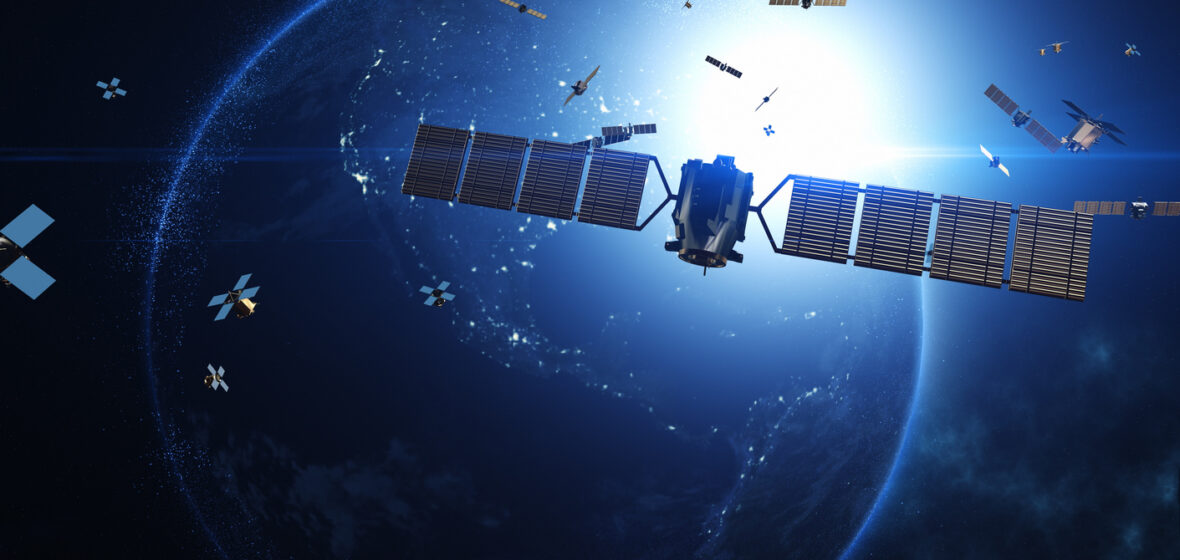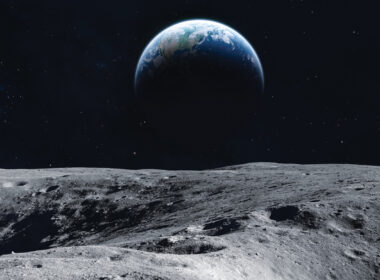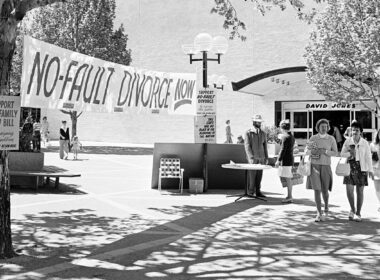In the US, a rare accident has taken place that has put the focus on the increasing problem of space junk and its potential impact on humans and infrastructure.
When debris from space fell with such speed and strength that it demolished part of a residential home in Naples, Florida on March 8, insurance covered some of the damage. But the lawyer (Micah Nguyen Worthy of Cranfill Sumner LLP) for the homeowners has obviously faced the question: who is responsible when internationally-owned debris from satellites or other space junk damages residential homes – and potentially causes injury or death?
In this case, NASA confirmed the debris came from a 2.9-ton pallet of used batteries jettisoned from the International Space Station in March of 2021, which had been expected to burn up in Earth’s atmosphere. On May 22, 2024, Worthy submitted a claim to NASA to recover damages for her client Alejandro Otero and his family.
“If the incident had happened overseas, and someone in another country were damaged by the same space debris as in the Oteros’ case, the U.S. would have been absolutely liable to pay for those damages under the Convention on International Liability for Damage Caused by Space Objects also known as the ‘Space Liability Convention'”, Worthy says in a statement.
“We have asked NASA not to apply a different standard towards U.S. citizens or residents, but instead to take care of the Oteros and make them whole. Here, the U.S. government, through NASA, has an opportunity to set the standard or ‘set a precedent’ as to what responsible, safe, and sustainable space operations ought to look like. If NASA were to take the position that the Oteros’ claims should be paid in full, it would send a strong signal to both other governments and private industries that such victims should be compensated regardless of fault.
“Here, the U.S. government, through NASA, has an opportunity to set the standard or ‘set a precedent’ as to what responsible, safe, and sustainable space operations ought to look like. If NASA were to take the position that the Oteros’ claims should be paid in full, it would send a strong signal to both other governments and private industries that such victims should be compensated regardless of fault.”
The European Space Agency (ESA) estimates around one large piece of space junk falls back to Earth per week.
In July last year, a large metal object was located on a beach near Jurien Bay in Western Australia, which the Australian Space Agency claimed was “most likely debris from an expended third-stage of a Polar Satellite Launch Vehicle (PSLV).” PSLV rockets are operated by Indian Space Research Organisation (ISRO). It was posited that part of the rocket from a launch months earlier had dropped back into the atmosphere, and into the ocean.
To understand the complexities of space, legal responsibility for space junk, and the growing impact of commercial interests versus public interest in the space sector, LSJ spoke with experts from Sydney-based firm Bartier Perry.
Darren Gardner, Partner at Bartier Perry says, “Space law is not a new field. For example, right now there are more than 8000 satellites orbiting the Earth. These satellites play a critical role in global communications, security and infrastructure.”
“Legal services are required to ensure that there is proactive compliance and risk management of terrestrial and extra-terrestrial issues and interests.”
International legislation and treaties governing space
Bartier Perry Associate Samantha Pacchiarotta says, “space junk both in orbit and on Earth now poses a major risk and legal issue. Aside from the recent incident in Florida, Australia has had its own run in with space junk.”
“In 2022, debris from a SpaceX flight was found by a sheep herder in remote southeast Australia and more recently in July 2023, a mysterious two-metre metal cylinder washed up on a WA beach. The object was later identified by experts as debris from a rocket operated by the Indian Space Research Organisation,” she says.
“The process of identifying an object and which nation it belongs to is made easier by the requirement for a ‘launching State’ to maintain a national register which records the details of all space objects launched. Some of this information must also be provided to the UN for inclusion in a public international register.”
Australia is party to a number of treaty obligations: Outer Space Treaty 1967, Convention on International Liability for Damage Caused by Space Objects (Liability Convention), Convention on Registration of Objects Launched into Outer Space (Registration Convention) and Australia’s Space Act – the Space (Launches and Returns) Act 2018 (Cth) (Space Act).
Pacchiarotta says, “The treaties do not set out the procedures for removal of space debris that has hit Earth, which is often a complex and time consuming operation. Rather this task is left to states to coordinate.”
“In terms of liability under the international framework, when a space object crashes and causes damage on Earth, the launching state is absolutely liable, and there is no need to prove fault. The launching state must pay compensation for damage caused by its space object. States are also responsible for the activities of private organisations and individuals and can be held liable for damage caused by space objects belonging to these groups.”
Liability for injury, damage, or death
Jennifer Shaw, Partner at Bartier Perry, says, “There are no cases that we are aware of where someone in Australia has been injured or killed by space junk. That said, as more and more rockets and satellites are sent into orbit and older ones become obsolete the risk of space junk causing death or injury to a human is growing.”
Shaw explains that in order to hold a launch permit, the minimum required insurance (with some exceptions) is $100 million and the Commonwealth is liable to pay compensation to any Australian nationals for damage in excess of the insured amount, up to $3 billion.
Australia’s framework around liability for falling space debris has its origins in our treaty obligations.
Article VII of the Outer Space Treaty of 1967, to which Australia is a party, provides that:
“Each State Party to the Treaty that launches or procures the launching of an object into outer space, including the moon and other celestial bodies, and each State Party from whose territory or facility an object is launched, is internationally liable for damage to another State Party to the Treaty or to its natural or juridical persons by such object or its component parts on the Earth, in air or in outer space, including the moon and other celestial bodies.”
In 1972, these concepts were further developed in the Convention on International Liability for Damage Caused by Space Objects (Liability Convention). Article 2 of the Liability Convention provides that a launching state shall be absolutely liable to pay compensation for damage caused by its space objects on the surface of the Earth or to aircraft, and liable for damage due to its faults in space. “Launching state”, in this context, includes a state from whose territory or facility a space object is launched and a state which launches or procures the launching of a space object.
In addition, Article 5 of the Liability Convention provides “[w]henever two or more States jointly launch a space object, they shall be jointly and severally liable for any damage caused.”
In 2020, Australia became a signatory to the Artemis Accords, a common set of declaratory principles to enhance the governance and use of outer space.
“The Artemis Accords do not specifically address or supplement the existing treaty obligations as to liability, except to affirm the importance of compliance with the Outer Space Treaty and Liability Convention,” Shaw explains.
“However, section 12 of the Accords titled ‘Orbital Debris’ contains a commitment to mitigate orbital debris and limit, to the extent practicable, the generation of new, harmful debris by taking appropriate measures including post-mission disposal of space structures.”
From a statutory perspective in Australia, the Space (Launches and Returns) Act 2018 (Cth) (Space Act) reflects the principles of the Outer Space Treaty 1967, including the principles of liability for damage caused by space objects or space debris. The Space Act provides that a person who launches a space object from Australia or under the jurisdiction of Australia is liable for any damage caused by the space object or any debris resulting from the launch.
Both the Federal Court and Federal Circuit and Family Court of Australia have jurisdiction to hear and determine actions for compensation for damage to which these laws apply.
“A range of licenses and permits are relevant, depending on the object being launched and the location of the launch. Among others, these include launch facility licenses, Australian launch permits, Australian high powered rocket permits and overseas payload permits,” Shaw says.
Theoretically, Shaw explains, a person or entity is responsible for launching or controlling the space debris, they could potentially be liable under Australian law for harm or damage caused:
- pursuant to the Space Act
- in the tort of negligence
- for trespass to person or property
- in very serious and rare cases, involuntary manslaughter by criminal negligence.
An Australian innovation to address junk
Several companies, including SpaceX and Amazon, plan to launch thousands of satellites (called mega constellations) to achieve global satellite internet coverage. An additional 50,000 satellites in orbit would pose much greater risk of collisions.
In late April last year, a SpaceX Starship exploded and rained debris over Port Isabel, Texas, shattering windows of homes and businesses. While that was attributed to the US Federal Aviation Administration in terms of legal liability for damages, there remains a growing problem of more international satellites and the debris from increasing explorations in space impacting on Earth.
Debris is a growing threat to Low Earth Orbit (LEO), the most accessible area of space. In LEO, objects can move at up to 27,358km per hour, making even the smallest amounts of debris potentially deadly.
When two satellites collide, they can smash apart into thousands of new pieces, which is rare. However, several nations have deliberately attempted to blow up their own satellites. The USA, China and India have used missiles to practise blowing up their own satellites. This creates thousands of new pieces of dangerous debris, which is monitored by the Department of Defense’s global Space Surveillance Network (SSN).
Eric Kwan, Special Counsel, says, There are nations that are not party to the relevant space law conventions or treaties, but this does not mean that those non-treaty nations are free from potential liability as liability can attach for other reasons like, for example, under bi- or multi-lateral arrangements or general principles of international law.”
There are two main conventions of relevance:
- the Treaty on Principles Governing the Activities of States in the Exploration and Use of Outer Space, including the Moon and Other Celestial Bodies (Outer Space Treaty); and
- the Convention on International Liability for Damage Caused by Space Objects (Space Liability Convention).
As of June 2024, 115 countries, including all “major spacefaring nations”, are party to and have ratified the Outer Space Treaty. Another 22 countries have signed up to but not ratified the treaty; and 100 countries are party to the Space Liability Convention, with another 18 countries who have signed up to but not ratified.
Whilst nations who are not party to these treaties will not be assigned liability under these treaties, those nations may still have liability under:
- bi- or multi-lateral treaty or agreement, such as the Resolution of the Council of the European Space Agency on the Agency’s Legal Liability, ESA/C/XXII/Res.3 (13 December 1977) and the Memorandum of Agreement on Liability for Satellite Launches Between the Government of the United States of America and the Government of the People’s Republic of China, 17 December 1988; and
- general principles of international law.
“Putting aside the fact that there are conventions or treaties in place to assign liability, there are still various ongoing challenges with actually assigning liability and calculating damage, including those around identifying what the object was and who launched the object, as well assigning or proportioning liability where damage is caused by multiple objects or objects transferred mid-orbit,” Kwan says.




